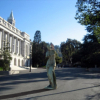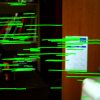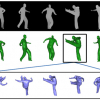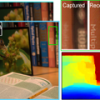ICCV
2009
IEEE
15 years 4 months ago
2009
IEEE
A key ingredient in the design of visual object classification
systems is the identification of relevant class specific
aspects while being robust to intra-class variations. Whil...
ICCV
2009
IEEE
15 years 4 months ago
2009
IEEE
Given a single outdoor image, we present a method for estimating the likely illumination conditions of the scene. In particular, we compute the probability distribution over the su...
ICCV
2009
IEEE
15 years 4 months ago
2009
IEEE
We present an activity recognition feature inspired by
human psychophysical performance. This feature is based
on the velocity history of tracked keypoints. We present a
generat...
ICCV
2009
IEEE
15 years 4 months ago
2009
IEEE
Methods for super-resolution can be broadly classified
into two families of methods: (i) The classical multi-image
super-resolution (combining images obtained at subpixel
misali...
ICCV
2009
IEEE
15 years 4 months ago
2009
IEEE
We present methods for training high quality object detectors
very quickly. The core contribution is a pair of fast
training algorithms for piece-wise linear classifiers, which
...
ICCV
2009
IEEE
15 years 4 months ago
2009
IEEE
Object tracking typically relies on a dynamic model to
predict the object’s location from its past trajectory. In
crowded scenarios a strong dynamic model is particularly
impo...
ICCV
2009
IEEE
15 years 4 months ago
2009
IEEE
We describe a method for producing a smooth, stabilized
video from the shaky input of a hand-held light field video camera—
specifically, a small camera array. Traditional stab...
ICCV
2009
IEEE
15 years 4 months ago
2009
IEEE
We propose a novel approach to reconstruct complete
3D deformable models over time by a single depth camera,
provided that most parts of the models are observed by the
camera at...
ICCV
2009
IEEE
15 years 4 months ago
2009
IEEE
This purely theoretical work investigates the problem
of artificial singularities in camera self-calibration. Selfcalibration
allows one to upgrade a projective reconstruction
t...
ICCV
2009
IEEE
15 years 4 months ago
2009
IEEE
The classical approach to depth from defocus uses two
images taken with circular apertures of different sizes. We
show in this paper that the use of a circular aperture
severely...




